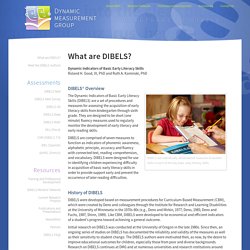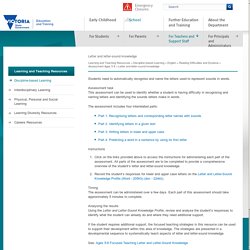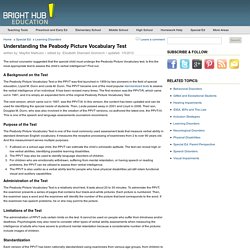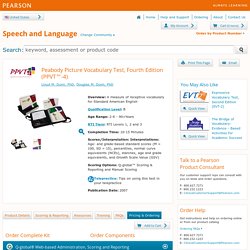

What are DIBELS? : Dynamic Measurement Group. Roland H.

Good, III, PhD and Ruth A. Kaminski, PhD DIBELS® Overview DIBELS are individually administered measures of student skills in each of the key basic early literacy skills. The Dynamic Indicators of Basic Early Literacy Skills (DIBELS) are a set of procedures and measures for assessing the acquisition of early literacy skills from kindergarten through sixth grade. DIBELS are comprised of seven measures to function as indicators of phonemic awareness, alphabetic principle, accuracy and fluency with connected text, reading comprehension, and vocabulary. History of DIBELS DIBELS were developed based on measurement procedures for Curriculum-Based Measurement (CBM), which were created by Deno and colleagues through the Institute for Research and Learning Disabilities at the University of Minnesota in the 1970s-80s (e.g., Deno and Mirkin, 1977; Deno, 1985; Deno and Fuchs, 1987; Shinn, 1989).
Initial research on DIBELS was conducted at the University of Oregon in the late 1980s. Letter and letter-sound knowledge. <div class='noindex'>You may be trying to access this site from a secured browser on the server.

Please enable scripts and reload this page. </div> Turn on more accessible mode Skip Ribbon Commands Skip to main content Emergency Closures Letter and letter-sound knowledge Students need to automatically recognise and name the letters used to represent sounds in words. Assessment task This assessment can be used to identify whether a student is having difficulty in recognising and naming letters and identifying the sounds letters make in words.
Understanding and Assessing Fluency. Let's cut through the buzz around fluency and review what reading fluency is, why it is essential to ensure that our students have sufficient fluency, how fluency should be assessed, and how to best provide fluency practice and support for our students.

We'll start by defining fluency. While the National Reading Panel's definition of fluency as the ability to read text with accuracy, appropriate rate, and good expression (NICHD, 2000) is widely accepted among fluency researchers, these experts continue to debate the more subtle aspects of fluency (Stecker, Roser, and Martinez, 1998; Wolf and Katzir-Cohen, 2001). However it is defined, this much is certain: Fluency is necessary, but not sufficient*, for understanding the meaning of text.
When children read too slowly or haltingly, the text devolves into a broken string of words and/or phrases; it's a struggle just to remember what's been read, much less extract its meaning. Student placed vocal emphasis on appropriate words. What Is the Peabody Picture Vocabulary Test All About? Written by: Mayflor Markusic • edited by: Elizabeth Stannard Gromisch • updated: 1/5/2012 The school counselor suggested that the special child must undergo the Peabody Picture Vocabulary test.

Is this the most appropriate test to assess the child’s verbal intelligence? Find out. A Background on the TestThe Peabody Picture Vocabulary Test or the PPVT was first launched in 1959 by two pioneers in the field of special education, Llyod M. Peabody Picture Vocabulary Test, Fourth Edition. The PPVT-4 test offers many enhancements to a vocabulary assessment that has been well respected for 50 years.

This latest edition has been co-normed with the Expressive Vocabulary Test, Second Edition (EVT™-2), allowing you to make direct comparisons between receptive and expressive vocabulary performance. Quick and easy to administer, the PPVT-4 saves you valuable time—so that you can focus on implementing successful interventions. Ideal for progress monitoring! Unlike some other measures of vocabulary, the PPVT-4 supplies two equivalent forms of the test which contain different vocabulary items—helping ensure the individual has not “learned” the test.
One form can be used prior to intervention to assess individuals’ vocabulary knowledge and the alternative form can be used for re-testing to evaluate and document progress. Users & Applications The PPVT-4 test is individually administered and norm-referenced. Features & Benefits New! PPVT-4 Sample Training Item.